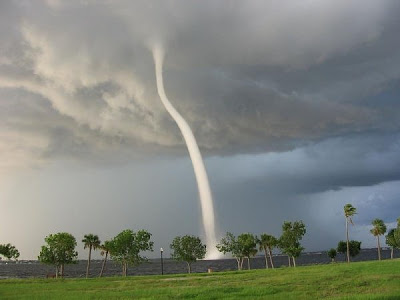A recent outbreak of severe convective storm weather, so featuring tornadoes, severe thunderstorms, large hail and strong winds, which has been dubbed the “Ring of Fire” is expected to result in insurance and reinsurance industry losses of $2.5 billion, by catastrophe modellers Karen Clark & Company.
 The so-called “Ring of Fire” convective storm event, so named due to the spread of storms in a ring-like shape, occurred between the 11th and 16th May 2018 and impacted numerous U.S. states to the east of the Rockies
The so-called “Ring of Fire” convective storm event, so named due to the spread of storms in a ring-like shape, occurred between the 11th and 16th May 2018 and impacted numerous U.S. states to the east of the Rockies
The greatest levels of damage were reported in states across the Midwest, Northeast, and Mid-Atlantic and Karen, Clark & Company estimates that as many as 12 states will see insured losses surpassing $100 million in each.
That makes the impacts from this severe convective storm outbreak wide-ranging and it could take some time before the final industry loss toll is understood.
Karen Clark & Co. estimates that insurance and reinsurance interests will end up paying a bill of around $2.5 billion for losses from this event, including losses to residential and commercial property, as well as automobiles.
That will almost certainly feed through to certain collateralized reinsurance markets and ILS funds, as an event with a loss of $2.5 billion is likely to cause a number of primary players to call on their reinsurance panel for support in paying claims.
Of course, any ILS players that access risk from further up the value-chain will also be likely to face losses due to this event, if they are underwriting portfolios of residential or commercial property in the affected states.
KCC explained that the Ring of Fire severe convective weather system resulted in more than 900 reports of wind gusts in excess of 58 mph, more than 500 reports of hail, and 28 tornadoes. Additionally, there were a number of microbursts and derechos which caused wind gusts in excess of 100 mph, while hail was reported across the regions and there were come reports of baseball size hail stones.
KCC further explained the event
This event began with an upper level blocking pattern that set up off the West Coast and prevented low pressure systems from progressing across the country. At the same time, a moderate but steady circulation set up over the Southeast bringing warm, moist air from the Gulf to the Ohio River Valley. Upper air winds were light within the region, but along the borders of the subtropical air mass, wind shear was high enough to support the formation of supercell storms. Most of the storm activity was along an arc from Texas to Kansas, through the Ohio Valley to the Mid-Atlantic states, a setup meteorologists refer to as a “ring of fire.”
The ring of fire conditions persisted for several days while southerly flow continued to supply the Southeast with unstable, subtropical air. The instability built up to such an extent that when the blocking pattern finally broke, it took only a weak upper air disturbance to trigger the development of supercell storms in Pennsylvania, New York, and Connecticut.
This event was characterized by widespread instability and consistent but moderate southerly flow over the Great Plains. Due to a lack of strong upper level winds, there was a limited number of rotating supercells, and as such, most of the damage was caused by hail and straight-line winds rather than tornadoes.
There were over 600,000 power outages in Mid-Atlantic and Northeast states and tens of thousands more across the US due to high winds, downed trees and power lines.
Register now for our upcoming ILS conference. Tickets on sale here.

 View all of our Artemis Live video interviews and subscribe to our podcast.
View all of our Artemis Live video interviews and subscribe to our podcast.
All of our Artemis Live insurance-linked securities (ILS), catastrophe bonds and reinsurance video content and video interviews can be accessed online.
Our Artemis Live podcast can be subscribed to using the typical podcast services providers, including Apple, Google, Spotify and more.































